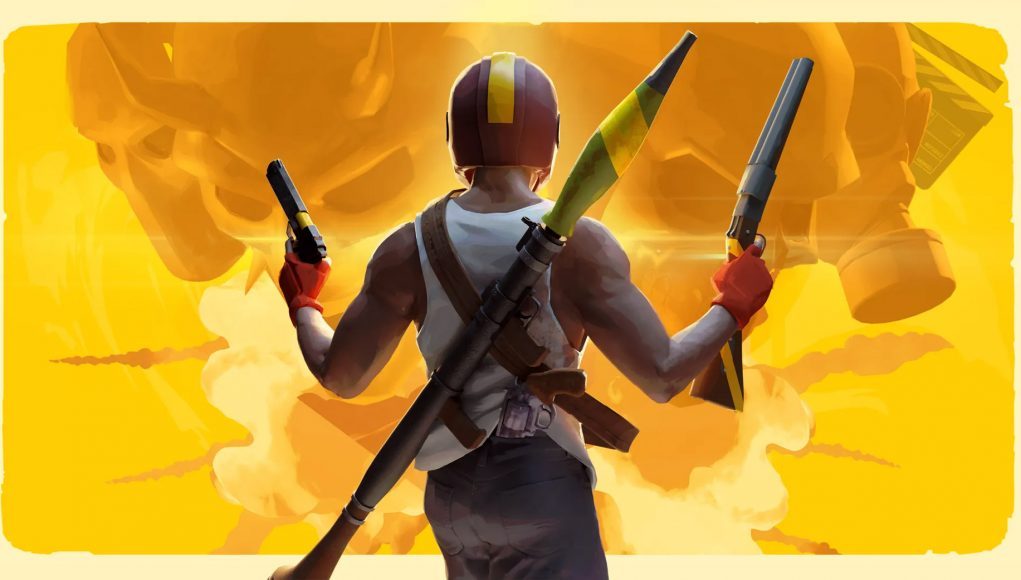First released eight years ago, SUPERHOT VR is not just a notable VR classic—it’s still a great game. Although it never got a sequel, it left enough of a mark for not just one but several spiritual successors. The upcoming Quest game Action Hero from Fast Travel Games revisits SUPERHOT’s innovative mechanic with a smart premise. But to meet or surpass its predecessor, Action Hero will need to take it to the next level.
If you’ve never played Superhot, it’s built around a core mechanic where time only moves forward when you are physically moving. So if you stay completely still, the game more-or-less freezes. That means if there’s a bullet heading for your face and you freeze in place, the bullet freezes too. That gives you time to observe the situation and make a calculated decision about what to do next. It’s basically ‘bullet time’ from The Matrix, but you’re in control of it.
Action Hero isn’t exactly trying to hide its inspiration… in fact I’d say the unique ‘time moves when you move’ mechanic from Superhot is the really the heart of the game and the main reason to play it. After playing Action Hero for myself I can confirm that dodging a bullet as it wizzes inches from your face—while its path through time is directly related to your movements—is still an incredibly unique and engaging VR experience.
But where SUPERHOT had an intentionally low-poly look and consisted of a setting that was little more than a vague backdrop for the game to exist, Action Hero is built around the idea that you’re an action movie stunt person doing all these crazy moves because you’re being filmed for a movie.
It’s a clever idea. Levels are packaged as ‘movies’ which consist of a series of scenes strung together under one umbrella. For instance, there’s a level that’s roughly in the vain of Indiana Jones, where you’re in an ancient temple-like environment shooting baddies. Each ‘scene’ within the ‘movie’ is a moment of gameplay where you’re tasked with dodging, shooting, etc.
When you complete a scene, you move forward to the next one, and so on, with a logical progression that follows a basic movie narrative (ie: hero enters temple, kills goons, stops bad guys from stealing the important thing, then escapes).
This structure not only increases the cohesion of the scenes, but also allows for a bunch of different settings, enemies, weapons, etc., by letting players jump from one ‘movie’ to another.
The basic ‘time moves when you move’ mechanic is executed well, and generally feels as awesome as it does in Superhot.
But to really deliver something that feels like a next-gen version of Superhot, Action Hero needs to seriously bump up the variety and polish—otherwise, why not just play Superhot instead?
The whole premise of Action Hero is that you’re a stunt person acting out spectacular action scenes in movies. But spectacle is lacking. The game doesn’t feel particularly polished visually or audibly.
Of course this is an unfinished build of the game and hopefully more polish comes later. But if the marketing tells us this game is supposed to be a “blockbuster VR FPS with explosive set pieces and cinematic design,” then those elements should really be in place before showing off the game. With Action Hero planned for launch by the end of this year… there’s only four months, at most, for that to fall into place.
It’s not just visual and audio polish either. SUPERHOT succeeded not just because it had a really cool fundamental mechanic, but also because the level design—the specific scenarios the player has to conquer—were very well crafted. They were challenging and varied throughout.
Action Hero has proven that it can nail the fundamental mechanic, but it’s going to need to tighten up its level design and bring more variety—in weapons, enemies, and scenarios—into the mix if it wants to have a genuine value proposition when put next to Superhot itself.
I, for one, would love to see Fast Travel Games pull this off. Conceptually, Action Hero is genius. It revives a truly unique mechanic and builds it atop a framework that allows for unlimited creativity in what kinds of scenarios the player could be put in—be that contemporary action, horror, sci-fi, western, and a million other possibilities. But when it comes right down to it, quantity isn’t quality. The studio needs to nail the depth of gameplay before it’s worth leveraging the breadth of gameplay.







